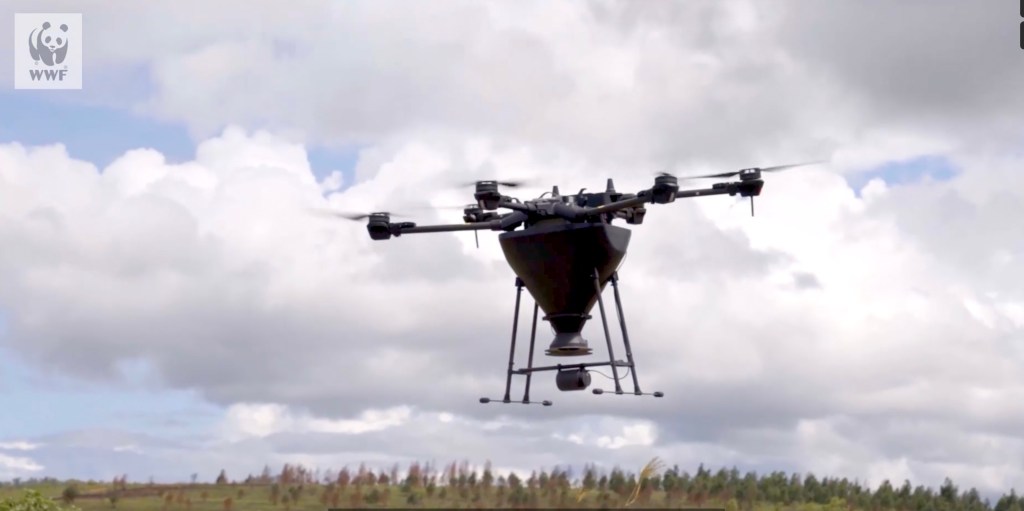
Led by World Wildlife Foundation Australia, a team of concerned organizations is mounting a drone-powered effort to create a “koala corridor” of trees and foliage to restore the marsupial’s habitat wiped out by recent fires, and reverse its population decline.
The project is initially focusing on an area west of Brisbane, where drones operated by aerial service company Dendra Systems fly missions spreading seeds over large swaths of fire path land with little ground cover. The objective is to regenerated trees and other flora that koalas rely on for both food and shelter. Once regrown, those trunks and branches will not only give the animals safe, with elevated spots to rest and raise their young, but will also fill in sparse landscape they must currently cross on foot – leaving them vulnerable to attacks by dogs or being hit by speeding vehicles.
Joining the World Wildlife Foundation Australia (WWF) and Dendra is the Turner Family Foundation and Australian government, which is providing $12.9 million in funding above contributions by other partners. The initial phase of the project will focus on 11,268 acres of private land west of Brisbane, and will broaden out as part of the WWF’s Regenerate Australia program to restore some of the 47 million acres of growth burned in the country’s devastating 2019-2020 wildfires. Among those is a koala habitat claimed by the flames, a loss that has accelerating the continued plunge in their population.
“We know that koalas have been in steep decline for the past 10 or 20 years, with reports in some areas that has been over 60% in their population,” explains Tanya Pritchar, WWF landscape restoration project manager. “WWF has a really ambitious goal of doubling koala numbers by 2050 and to do that we really need to scale up our restoration efforts, so that’s why we’re exploring these innovation techniques.”

Those are focused primarily on Dendra drones, which have been flying continual missions to spread a seed mix of 40 different plant and tree species – including the marsupial’s favorite blue gum eucalyptus that project leaders call “koala caviar.” The UAVs not only cover a far greater range of land than manual methods allow, but are also equipped with dissemination devices and smart software making them more efficient as well.
“Each drone can carry around 750 kilograms in a day, which I’m told is the weight of two polar bears,” says Dendra Systems cofounder and CEO Susan Graham. “And these drones can fly in swarms so that we can actually plant up to (1.6 tons) of seeds every day… Without a massively scalable approach to restoring ecosystems, we cannot reverse the damage and restore natural systems to health.”
Dendra drones are already scheduled to fly missions to restore koala habitat across nearly 50,000 acres over the next four years. That will be critical to returning life to wildfire burn zones, and help species of the estimated 3 billion animals adversely affected by the flames rebound. And that process has already begun, from the skies, in the WFF’s flight area west of Brisbane.
“We’re generating what we describe as a koala fountain,” says Ben O’Hara, land and environment general manager with the Turner Family Foundation. “A strong source population that can spread out along habitat corridors and bolster koala numbers throughout the region.”
FTC: We use income earning auto affiliate links. More.




Comments